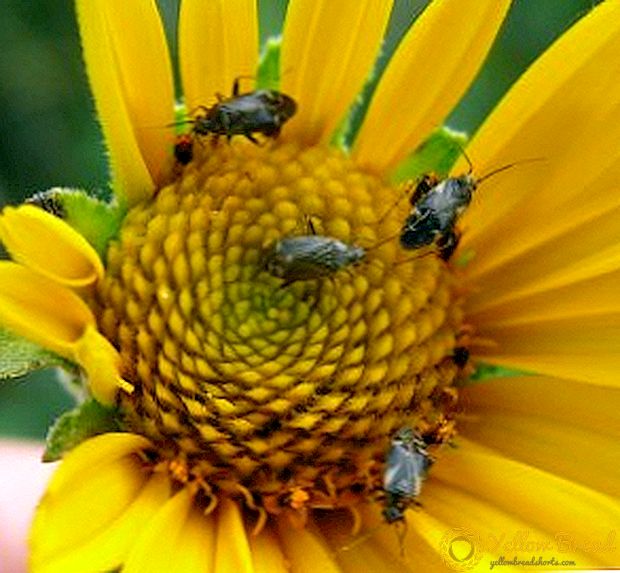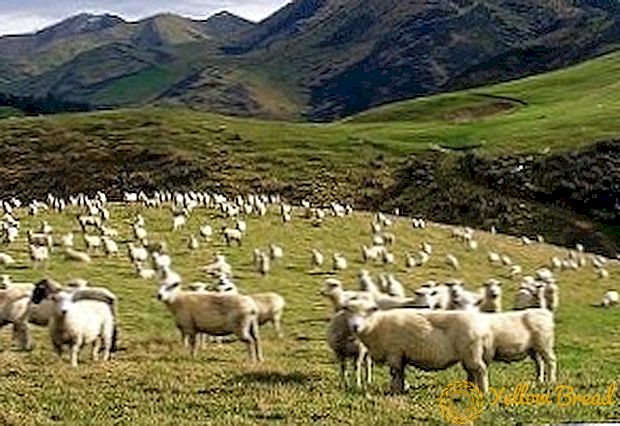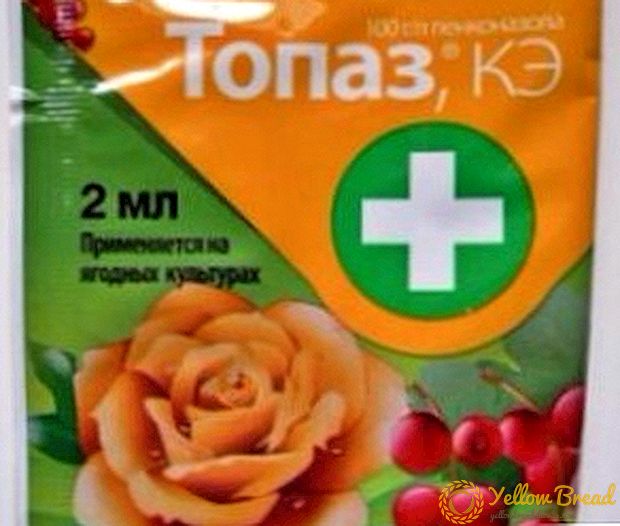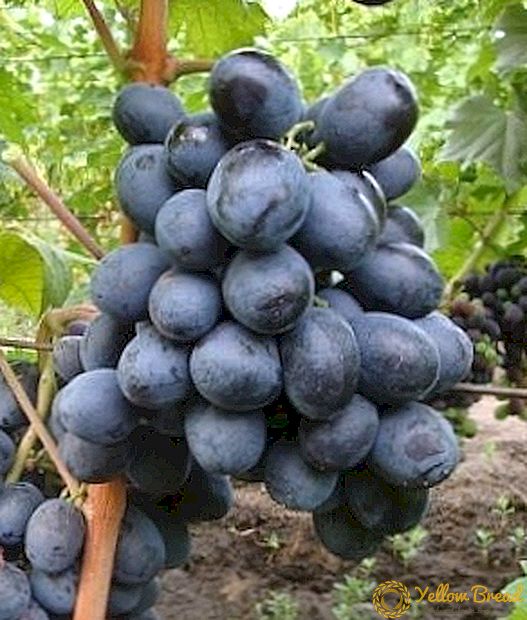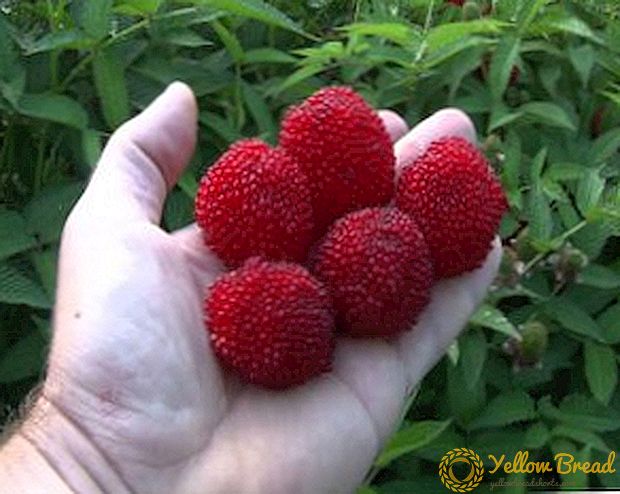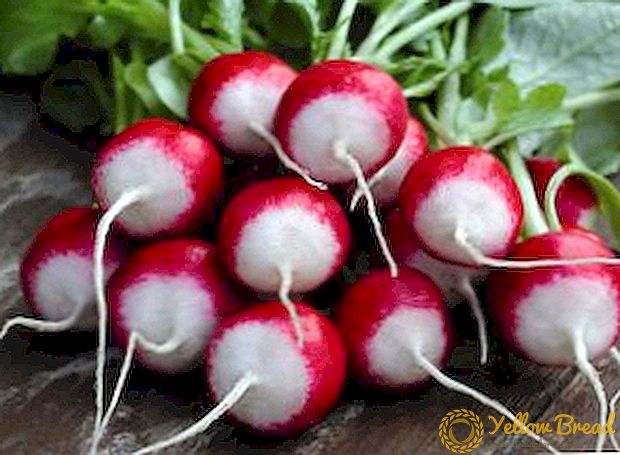 Radish belongs to the garden ripening crops, which are rarely affected by disease. However, it still happens. Proper farming and gardening will avoid most of them. In this article we will talk about the signs and methods of combating diseases of radish.
Radish belongs to the garden ripening crops, which are rarely affected by disease. However, it still happens. Proper farming and gardening will avoid most of them. In this article we will talk about the signs and methods of combating diseases of radish.
This vegetable can overcome both viruses and pathogenic fungi. They excite such dangerous diseases as rust, mosaic, vascular bacteriosis, etc.
- Belle cabbage crops (white rust)
- Quila
- Radish mosaic
- Cruciferous mealy dew
- Perinospora (downy mildew)
- Gray rot
- Vascular bacteriosis
- Blackleg
Belle cabbage crops (white rust)
One of the most common fungal diseases of radish and other cultures of the cabbage family is belle, or white rust. It is excited by the fungus Albugo Candida (Pets.) Gray.It affects the leaves, stems, pedicels and testes - they are covered with white oily coating. As the disease progresses, the affected tissues turn brown and dry out.
 Favorable factors for the development of white rust are long cold periods, an abundance of weeds in the garden, a poorly cleaned area in the autumn.
Favorable factors for the development of white rust are long cold periods, an abundance of weeds in the garden, a poorly cleaned area in the autumn.
Control measures. Since the pathogenic fungus winters on infected perennial plants and post-harvest residues, it is important to deal with weeds in a timely manner and carry out a thorough autumn harvest of plant residues.
With a strong defeat of linen, the radish is sprayed with copper-containing preparations, fungicides against downy mildew in crucifers ("Ridomil Gold MC", "Ditan M", etc.).
Quila
This fungal disease affects the radish roots - they appear growths in the form of balls or fusiform. At first, these growths are almost impossible to distinguish from the roots, since they have the same coloring with them.As the disease progresses, the roots turn brown and rot. This is the reason why radishes are not growing.
 Favorable factors are planting radish in low areas with frequent stagnation of water. Also contributes to the development of the disease acidic soil. The greatest harm to the keel is during periods of lack of moisture. The pathogen spreads through the soil or manure.
Favorable factors are planting radish in low areas with frequent stagnation of water. Also contributes to the development of the disease acidic soil. The greatest harm to the keel is during periods of lack of moisture. The pathogen spreads through the soil or manure.
Control measures. It is necessary to destroy weeds in time. Since seeds can be infected with a quillet, they should be disinfected before sowing. It is important to observe the recommendations for crop rotation.
For preventive purposes, before sowing radish (2-3 days), wood ash (100 g / 1 sq. M) is added to the wells. Before planting the seeds, the soil is well loosened. When planting seedlings, lime is added to the wells (35-40 g / 1 well). Also an important condition is the culling of seedlings.
For the treatment of this disease of radish, the soil is treated with lime milk (2 cups of lime / 10 liters of water). Consumption - 1 liter of solution for 1 plant.
Radish mosaic
 Mosaic is a dangerous viral disease of radish. It is characterized by a lag in the growth of a plant, mosaic pattern and a strong deformation of the growth of its leaves. The first signs are hardly noticeable - interstitial mosaic on sheets, which eventually turns into necrotic spots.
Mosaic is a dangerous viral disease of radish. It is characterized by a lag in the growth of a plant, mosaic pattern and a strong deformation of the growth of its leaves. The first signs are hardly noticeable - interstitial mosaic on sheets, which eventually turns into necrotic spots.
Control measures. Ways to treat mosaic of radish today is not invented. Sick plants are subject to immediate removal and destruction.
Since weavers, aphids, and mites act as carriers of the mosaic virus, it is necessary to combat the invasion of these parasites with insecticides in a timely manner. It is also important to weed the soil under the radish and between the rows, destroying weeds.
Cruciferous mealy dew
Powdery plaque on leaves, petioles and stalks of radish indicates the defeat of the plant by the fungi Brassicae and Erysiphe communis f - the causative agents of powdery mildew. Later the patina becomes brown.You can notice it mainly on the top of the sheet plate. The leaves dry, their shape is deformed. At the same time the whole radish slows down in growth.
 Control measures. If you noticed that the radish leaves are drying, and are looking for information about what to do about it, we advise you to immediately treat the plants with fungicides that suppress the development of powdery mildew (Ridomil Gold MC, Ditan M, etc.) or Bordeaux liquid.
Control measures. If you noticed that the radish leaves are drying, and are looking for information about what to do about it, we advise you to immediately treat the plants with fungicides that suppress the development of powdery mildew (Ridomil Gold MC, Ditan M, etc.) or Bordeaux liquid.
In order to prevent disease, one should follow the recommendations on crop rotation and avoid planting radishes near other cruciferous ones.
Perinospora (downy mildew)
Symptoms of peronosporoza appear on the leaves. Initially, small chlorotic spots are formed on them, subsequently they become light yellow, oily, angular, and then brown. On the lower part of the sheet plate there is a bloom of gray-violet color. The causative agent of the disease is the fungus Pseudoperonospora cubensis Rostowz.
Control measures. With the development of this disease, the same methods of control are used as in the cruciferous mildew.
Gray rot
With the disease of gray rot, the roots of radish become covered with brown spots, which soon form a gray fluffy patina. The causative agent of the disease is the fungus Botrytis cinerea Pers.et Fr., which is carried by wind, water, in contact with infected root crops in storage. Black sclerotia can form on plant debris.
Favorable factors for the development of the disease are low temperatures with high humidity, for example, rainy and cold summers.
 Control measures. Upon detection of diseased plants, they should immediately be removed and destroyed. To protect the radish from the disease, you can use a solution of copper sulphate, Bordeaux liquid, fungicides such as Ridomil Gold MC, Skor, Hom, Fundazol, etc. .
Control measures. Upon detection of diseased plants, they should immediately be removed and destroyed. To protect the radish from the disease, you can use a solution of copper sulphate, Bordeaux liquid, fungicides such as Ridomil Gold MC, Skor, Hom, Fundazol, etc. .
Vascular bacteriosis
Adult plants are affected by vascular bacteriosis, seedlings are much less common. A characteristic symptom of this bacterial disease is the blackening of the veins (vessels) on the leaves. The leaves begin to turn yellow, crumble and fall off.
The development of vascular bacteriosis is promoted by frequent rains and damage to the culture by pests.The infection lives in seeds, queen cells and plant debris.
 Control measures. To prevent contamination of radish with this disease, special attention should be paid to the selection of seeds. Before sowing, they should be kept in hot water (+50 ° C) for 20 minutes. After which they should be dried. Selection of seeds is necessary only in healthy plants, before planting resist disinfection.
Control measures. To prevent contamination of radish with this disease, special attention should be paid to the selection of seeds. Before sowing, they should be kept in hot water (+50 ° C) for 20 minutes. After which they should be dried. Selection of seeds is necessary only in healthy plants, before planting resist disinfection.
It is also necessary to carry out autumn harvesting of post-harvest residues. Do not neglect the rules of crop rotation. An important component of prevention is pest control.
Blackleg
Fungal black leg disease affects young plants, is manifested by yellowing and deformation of leaves and blackening at the base of the stem.
Control measures. In order to prevent a similar disease on your plants, it is important to care for the seedlings and disinfect the seeds before sowing.
Seeds are treated with aloe juice, garlic pulp solution, and potassium permanganate. Seedlings should not be planted thickly. Landing is often aired. Do not allow elevated temperatures, heavy irrigation.
 Three days before planting seedlings, the soil must be watered with a solution of colloidal sulfur (40 g / 10 l of water). Immediately before planting, the soil is watered with a hot solution of potassium permanganate (1.5 g / 5 l of water).When growing plants, land is mulched near the stalks with sand with a layer up to 2 cm thick or with a mixture of sand and ash. This reduces the risk of black leg disease. Also, the seedlings are watered with a solution of potassium permanganate (3-5 g / 10 l of water).
Three days before planting seedlings, the soil must be watered with a solution of colloidal sulfur (40 g / 10 l of water). Immediately before planting, the soil is watered with a hot solution of potassium permanganate (1.5 g / 5 l of water).When growing plants, land is mulched near the stalks with sand with a layer up to 2 cm thick or with a mixture of sand and ash. This reduces the risk of black leg disease. Also, the seedlings are watered with a solution of potassium permanganate (3-5 g / 10 l of water).
If you pay attention to the fact that for some reason the radish turns black, most likely you are dealing with a disease called blackening of the roots. The roots are covered with blue-gray spots. Similar spots can be found in the pulp of the root. The plant rots and dies.
Control measures. The main cause of this problem is waterlogging, so watering should be moderate. Sick plants must be removed, the soil disinfected.
Cultivation of radish is often associated with difficulties in diagnosing and treating any disease. Armed with information about the symptoms of major diseases and measures of their confrontation, you can always start the treatment of vegetable crops in time and save the harvest.

